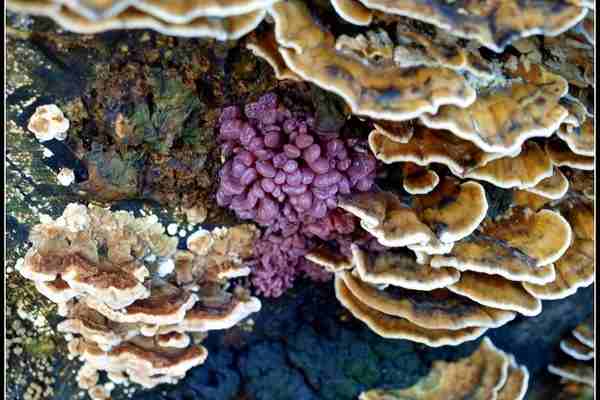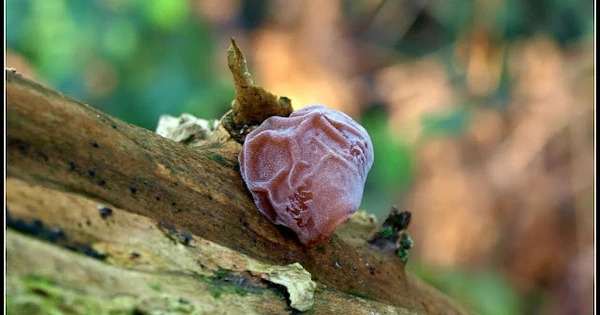Researchers have provided new light on the historic connection between mosses and fungi. They revealed that complex moss-fungus interactions were frequently dependent on a third variable: the existence of endobacteria within the fungi themselves.
The next time you stroll through the woods in the middle of winter, look for one of nature’s most tenacious and hearty survivors. No, not the patch of brown grass showing through a snowbank, or the acres of trees with naked boughs and limbs awaiting spring. Look down, and the only green you’ll notice is a beautiful carpet of mosses just under your boot.
For Björn Hamberger, a James K. Billman Jr., M.D., Endowed Professor in the College of Natural Science’s Department of Biochemistry and Molecular Biology, this year-round toughness is cause for admiration on its own.
“It gives you an idea of just how resilient these organisms are, and it’s probably one of the reasons that mosses have stuck around and haven’t been lost through evolution,” said Hamberger.
But it’s also a starting point for research with a scope that spans eons — from ancient Earth to humanity’s future in space. Appearing in The Plant Journal, the Hamberger lab’s latest paper seeks to better understand how mosses and other plants conquered our planet, and how, in order to do so, may have gotten some much-needed help from their longtime collaborators fungi.
At least 80% of modern plants still collaborate in some way with fungi, getting help to grow stronger and to become more resilient. As we look into a future where plants need to sustain a growing population, this will be a critical factor.
Björn Hamberger
From early Earth to future Mars
Mosses made the transfer to land 450 million years ago during the Ordovician epoch, a feat that Hamberger believes could not have been accomplished without collaboration. When mosses arrived, they would have had to deal with a slew of new and difficult variables, such as water control, gravity, shifting temperatures, and UV light exposure.
Fortunately, mosses encountered an environment already populated with early fungi, whose root-like networks, or mycelium, could extract crucial nutrients from the ground. In exchange for these nutrients, early terrestrial plants gave fungus a carbon supply, establishing a new partnership that has lasted to this day.
“At least 80% of modern plants still collaborate in some way with fungi, getting help to grow stronger and to become more resilient,” Hamberger explained. “As we look into a future where plants need to sustain a growing population, this will be a critical factor.”
Working with mosses for over a decade, Hamberger and his research group participated in a special exhibit at the Detroit Science Gallery called “Fog of Dawn” in 2019, which featured mosses growing in terrariums to mimic the atmosphere of primordial Earth and the subsequent takeover of plants and fungi.
The group also altered moss to express foreign, modern land-plant biochemical pathways, resulting in items like patchouli oil. Hamberger sees significant opportunities in the field of space exploration. Mosses and other plants could serve as natural fabricators for construction materials or medications, transforming carbon dioxide to oxygen during space journeys.
“If you can bring plants with you on such a journey and give them the blueprints to create useful products, that will cut down on the immense weight of raw materials in orbit,” Hamberger said. “Plus, when it comes to terraforming a place such as Mars, why not start with moss — a plant that’s successfully altered our own planet already?”
With their latest research in The Plant Journal, the Hamberger lab hopes to further pull back the curtain on plant-microbial interactions and discover the ways moss and fungi communicate at a microscopic level.

Friend or foe?
To achieve these objectives, Hamberger and Davis Mathieu, a doctorate student, and the paper’s first author, devised an experiment that allowed them to observe moss-fungi interactions in real-time.
Over three months, the scientists watched the moss, Phsycomitrium patens, colonize various terrariums. Some ecosystems were completely devoid of fungi, while others coexisted with two species of the ground-dwelling fungi family, Mortirellaceae, which most likely existed when plants first began to conquer the land.
The fungi were provided by fungal and genetics expert Greg Bonito, associate professor in MSU’s Department of Plant, Soil and Microbial Sciences and a long-time collaborator of Hamberger.
Using microscopy, genetic analysis, and Raspberry Pi microcomputers, the researchers tracked the subtle but distinct ways the moss interacted with its fungal neighbors. The team discovered that these interactions came to depend on a unique addition to the cast — endobacteria within the fungi.
These endobacteria provided a challenging question of their own. The endobacteria are completely dependent on their fungal host for survival, but it was unclear if they were bringing any value to the relationship.
“Generally, endobacteria are not seen as beneficial to fungi, with cells experiencing some big trade-offs for housing them,” said Mathieu. “This of course raises the question: why are they still around?”
Mathieu and colleagues discovered that when endobacteria are present, fungi can better connect with their mossy companions. When working with fungi that had their endobacteria removed, a complicated web of interactions began to emerge. For example, when endobacteria were present, one fungus species appeared to “eat” the moss from within. But what about samples in which endobacteria were absent?
“It lives side by side with the moss, completely indifferent,” Mathieu explained.
Meanwhile, another species of fungi that provided benefits to the moss changed its behavior when its endobacteria were removed. The fungi started producing spore-like structures indicative of stress and no longer colonized the moss as they once did. The Hamberger lab is looking forward to further unraveling these friend-or-foe relationships between moss, fungi, and endobacteria, and what these discoveries mean for understanding life on Earth.
“We thought we’d start with something simple and straightforward — the beginning of land plant life,” Hamberger added with irony. “But it turns out there’s this super exciting and very complex story that can teach us something about what happened during land plant evolution, what got us on this planet, and what might get us to a different planet.”
He also hopes that this research will spark interest in important life forms that we see every day, often without recognizing it.
“Maybe it might inspire a little bit of appreciation for these cool organisms who can live under harsh conditions and are the first ones in spring to say, ‘Yay, let’s go,’ when the snow melts and the sunlight returns.”















